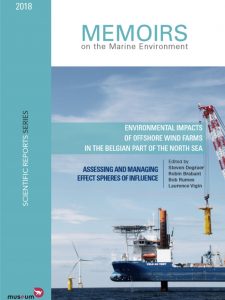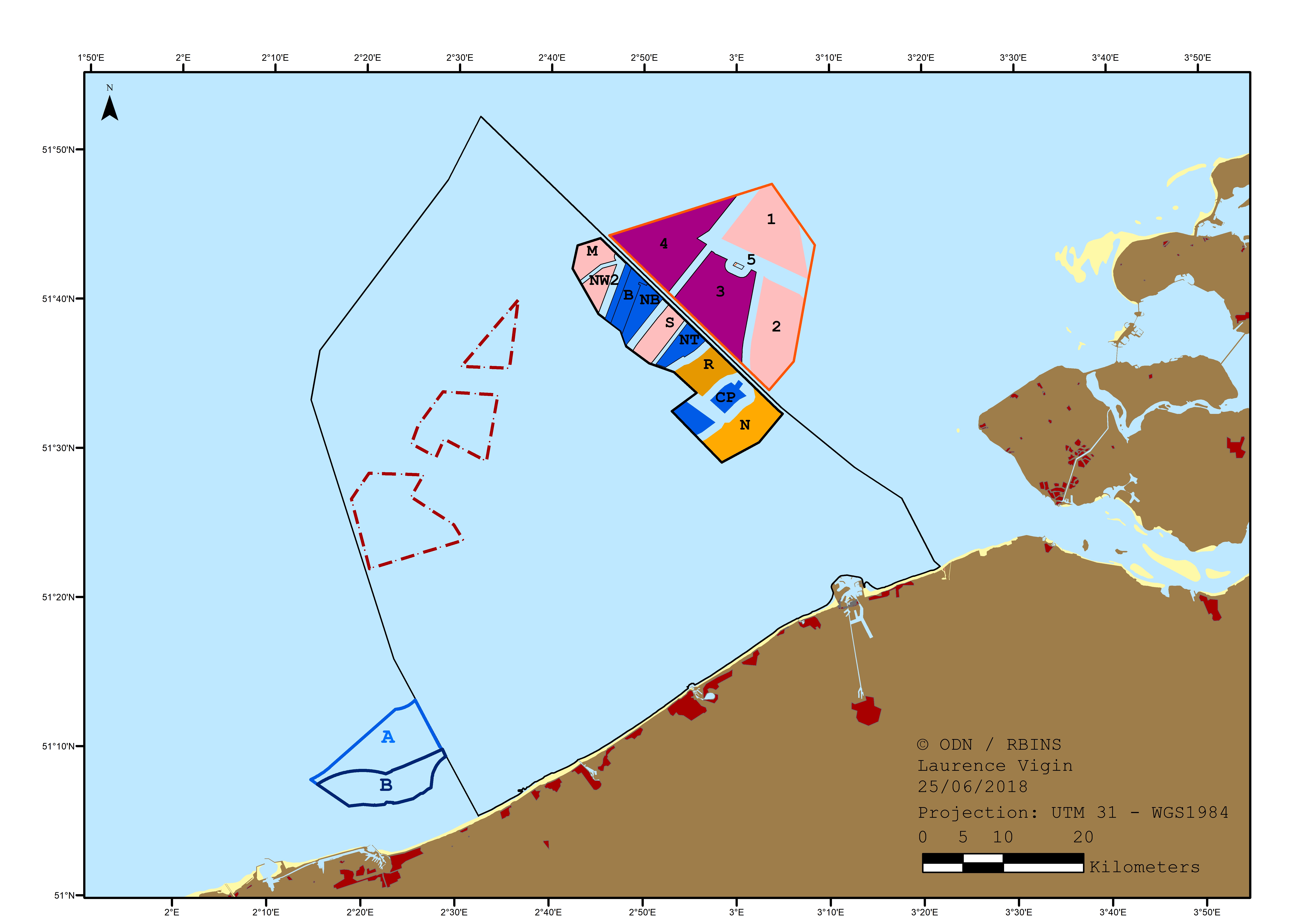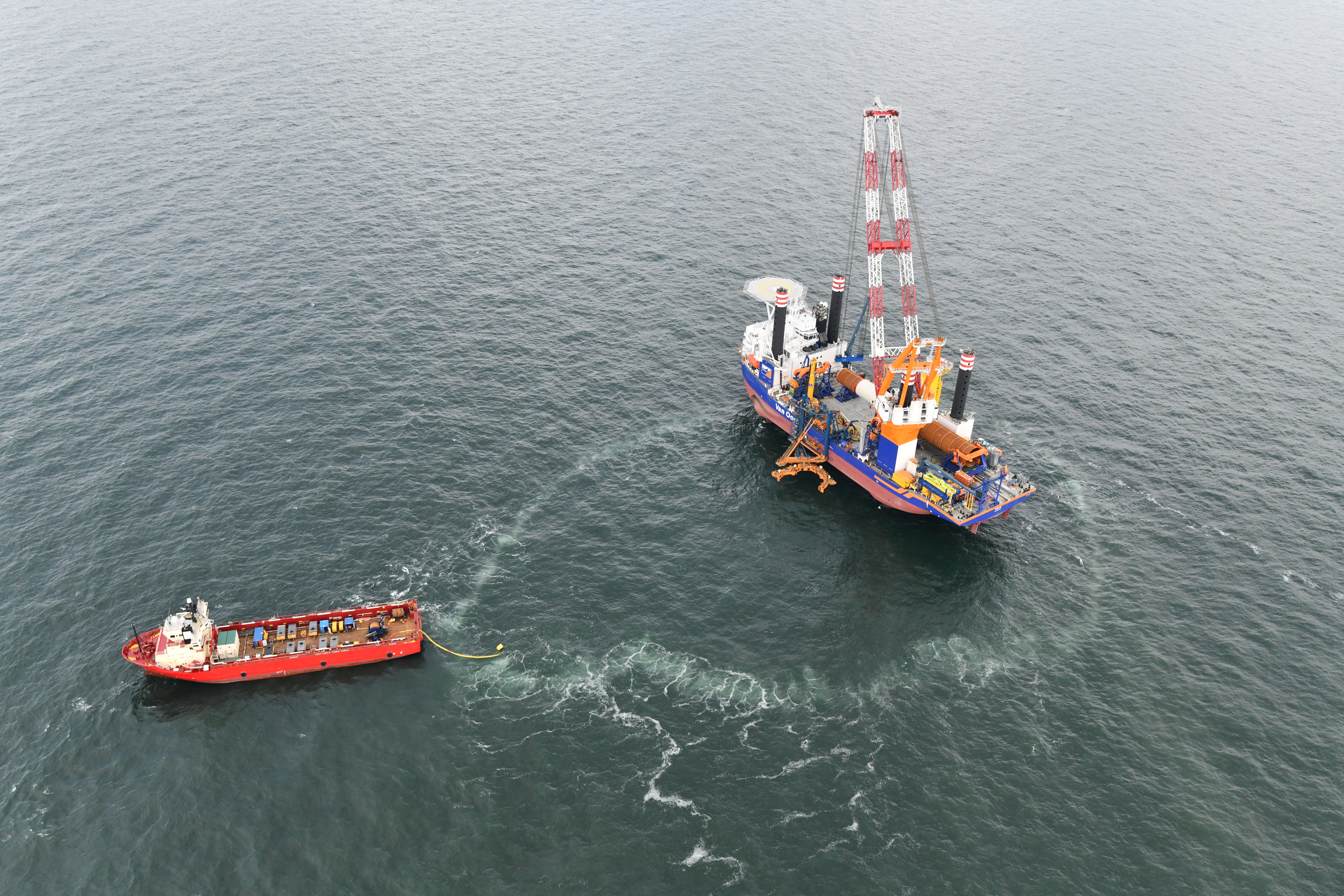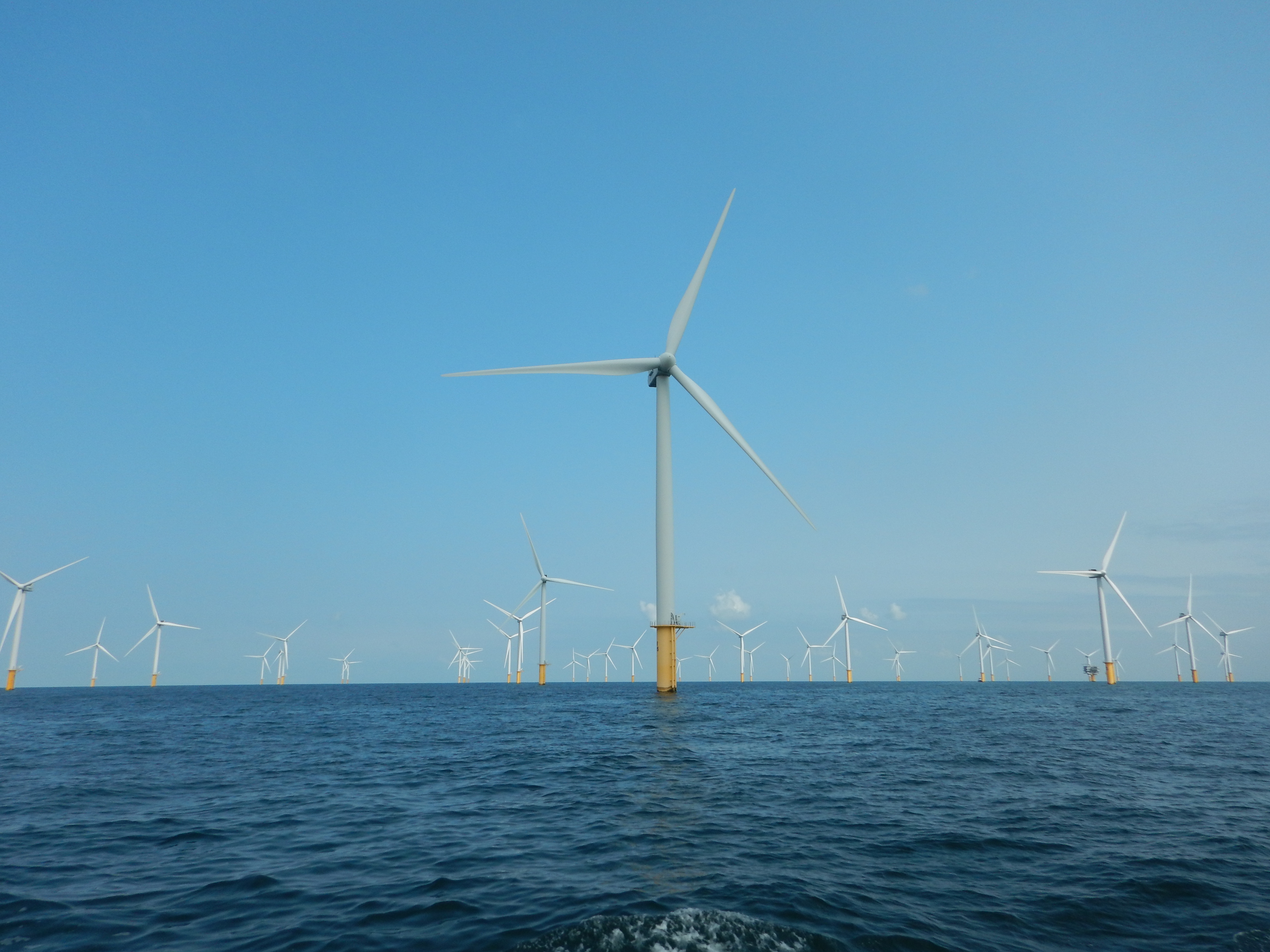 Energy production from renewable sources will cover 13% of the total Belgian energy consumption by 2020, if the target defined by the European Commission in 2001 is met. Offshore wind farms in the Belgian part of the North Sea are expected to make an important contribution to achieve that goal, and will produce ca. 43% of the renewable energy, assuming a 2000 Megawatt installed capacity by 2020. In the new report “Environmental Impacts of Offshore Wind Farms in the Belgian Part of the North Sea: Assessing and Managing Effect Spheres of Influence.”, the Royal Belgian Institute of Natural Sciences and its partners assess the impacts of offshore wind turbines on the marine ecosystem and reveal the processes behind these impacts.
Energy production from renewable sources will cover 13% of the total Belgian energy consumption by 2020, if the target defined by the European Commission in 2001 is met. Offshore wind farms in the Belgian part of the North Sea are expected to make an important contribution to achieve that goal, and will produce ca. 43% of the renewable energy, assuming a 2000 Megawatt installed capacity by 2020. In the new report “Environmental Impacts of Offshore Wind Farms in the Belgian Part of the North Sea: Assessing and Managing Effect Spheres of Influence.”, the Royal Belgian Institute of Natural Sciences and its partners assess the impacts of offshore wind turbines on the marine ecosystem and reveal the processes behind these impacts.
Nowadays, four offshore wind parks are already operational in the Belgian part of the North Sea, and a fifth (Norther) is currently being constructed. By the end of 2018, an installed capacity of 1152 Megawatt, consisting of 274 offshore wind turbines, will be operational in our national waters. Four other projects are scheduled to start construction in 2019 and 2020. With 238 km² reserved for offshore wind farms in Belgium, 344 km² in the adjacent Dutch Borssele area, and 122 km² in the French Dunkerque zone (Fig. 1), cumulative ecological impacts are likely to form a major concern in the southern North Sea over the coming years.

Apart from a domain concession, a developer must therefore also obtain an environmental permit prior to installing a wind farm. Such a permit includes terms and conditions intended to minimise the impact of the project on the marine ecosystem, but also imposes a monitoring programme to assess the effects of the project on the marine environment. In Belgium, the Royal Belgian Institute for Natural Sciences coordinates this monitoring programme, thereby also relying on the expertise of Ghent University, the Research Institute for Agriculture, Fisheries and Food (ILVO) and the Research Institute for Nature and Forest (INBO). “With this monitoring programme, we don’t only obtain a proper understanding of the influence sphere of individual wind turbines and of wind farms as a whole, it also allows us to design mitigation measures to directly manage unwanted effects on the marine ecosystem” says Steven Degraer, lead author of the report.
Some remarkable results from the new report
Effectiveness of a single Big Bubble Curtain (BBC) to mitigate underwater sound during pile driving (chapter 2): As the size of commercially available wind turbines has increased in the last decades, more powerful hydraulic hammers are required to drive the bigger steel foundation monopiles into the seafloor. As a result, higher levels of impulsive sound are introduced into the marine environment, raising concerns about possible negative impacts on marine life. To comply with the Belgian Marine Strategy Framework Directive requirements, a threshold of 185 dB at 750 m from the sound source should not be exceeded. Sound mitigation measures are therefore no longer an option but compulsory during piling activities. In this study, the effectiveness of a single Big Bubble Curtain was tested during the construction of the Rentel Park. In this method, air is compressed through a perforated hose that is installed on the seafloor around the construction location, creating a shield of bubbles that partially absorbs the sound energy, and reduces the sound with a maximum of 11-13 dB.

Monitoring of sediments and of invertebrates in the soft sediments surrounding the wind turbines has shown that mussels and anemones, organisms that are known to be fouling on the turbine foundations, are becoming more abundant in these sediments than in reference zones outside the wind farms. However, detailed follow-up is needed to validate whether this is a one-off observation or a real wind farm effect, so it is too early to conclude that a direct wind farm (‘reef’) effect, or an indirect fisheries exclusion effect, is manifesting itself (chapter 3). Changes in the sediments (such as fining and enrichment), and in density, diversity and composition of invertebrate communities were detected in different magnitude around the three different turbine foundation types (monopiles, jackets and gravity-based foundations) that are used in the Belgian part of the North Sea. It is suggested that these contrasting results might be due to a combination of site-specific dispersive capacities and structural differences between foundation types and their associated invertebrate communities (chapter 5).
Apart from the follow-up in already operational wind farms, also reference conditions of invertebrate and fish communities in new concession zones are described in the report, allowing future evaluation of the effects of newly constructed wind farms on these communities (chapter 4).
A closer look at the fish fauna in the offshore wind farms (chapter 6) revealed that a combination of varied sampling techniques is necessary to get a complete view on this community. Out of a total of 25 species, 15 are also known to dwell around wrecks in the same area. Four species however, the Tadpole Fish (Raniceps raninus), the Tompot Blenny (Parablennius gattorugine) and the Longspined Bullhead (Taurulus bubalis) were previously rarely or, in the case of the Ballan Wrasse (Labrys bergylta), only once reported from Belgian waters. These species can be characterized as hard substrate-frequenting species and are expected to increasingly benefit from the continued expansion of offshore wind farms in the Southern North Sea.
Modelling of GPS data of Lesser Black-backed Gulls (Larus fuscus) (chapter 7) caught and tagged in the colonies at Ostend and Zeebrugge confirmed that much more time was spent roosting on outer than on inner turbines within a wind farm. Also, a significant and gradual increase in the number of logs of flying birds going from the centre of the wind farm up to 2000 m from the wind farm edge was found, beyond which the response seemed to stabilise. A temporal analysis showed that the birds were increasingly wary of entering the wind farm during times of strong winds with fast moving rotor blades. These results can be of high value in refining collision risk modelling.

The population consequences of disturbance on a simulated Harbour Porpoise (Phocoena phocoena) population (chapter 8) were tested using 17 scenarios with and without various mitigating measures. The results of this study show that a combination of a seasonal pile driving restriction (when the porpoises are most abundant) and an acoustic deterring device was not enough to lower the impact on the porpoise population to acceptable values. These simulations also suggest that building a wind farm every year affected the harbour porpoise population more than building two wind farms at the same time.
For the first time in the North Sea, bat activity was studied at the height of the nacelle (at 94 m above the sea level) in wind turbines (chapter 9). Acoustic bat detectors were installed at four turbines in the Belgian waters. Several bat species are known to migrate long distances between summer and winter roosts, and to even cross the North Sea during their migration. The results indicate that the detections at nacelle height (in the center of the rotor swept area) were around 10% of the detections made at lower altitude (ca. 17 m above sea level), giving an indication of the activity of bats at different altitudes when crossing offshore wind farms. The observations however do not yet allow to make sound conclusions about the collision risk for bats, especially not in the lower part of the rotor swept zone.
More information:
This press release only describes the general monitoring framework of environmental effects in the Belgian offshore wind farms, and only focusses on some of the results. The complete report, as well as the older monitoring reports, can be consulted here.
